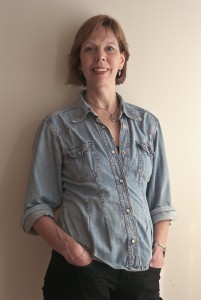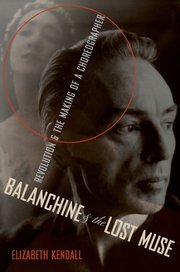 Elizabeth Kendall shares some of her own obsessions as a writer and tells us why the beauty, fragility and overwhelming emotion of dance might make it the most immediate of the arts.
Elizabeth Kendall shares some of her own obsessions as a writer and tells us why the beauty, fragility and overwhelming emotion of dance might make it the most immediate of the arts.
What drew you to write about Balanchine? Why is there such a sense of mystery around his work? The biographies of Balanchine that I’ve read over the years (2 long ones, 2 summarizing short ones, 1 book-length interview) seemed to present the story of his childhood and upbringing casually, and a little nonsensically, given that the Russian revolution hit when he was 13. Now, after writing this book, I think that the revolution is much more important for understanding Balanchine’s work than I used to think, but not directly. The ballets are about beauty, fragility, overwhelming emotion and a dream of harmony, even harmony in dissonance.
What made you first “fall in love” with the ballet and/or Balanchine’s choreography? Was there something about the moment in which you discovered it that made it more significant for you? I fell in love first with Balanchine’s work, with ballet’s past and its possibilities. When I encountered the New York City Ballet, it was the early 1970s; I was a young and off-balance refugee from the Middlewest, ready to plunge into the dance avant-garde. Balanchine’s ballets offered me the revelation that the avant-garde (which Balanchine belonged and still belongs to) could offer beauty and nourishment, together with deconstructionist stimulation.
In the introduction to Balanchine and the Lost Muse, you describe an interview you once held with Balanchine in 1981. You mention your patchy Russian history caused him to “serve up traumatic memories as cautious fairy tales.” Your book makes the case that this kind of narrative transformation is at the core of his work. Can you say a little more about this? Balanchine was “exiled” many times over – first from his family, then from imperial Russia, then from Bolshevik Russia, finally from Europe. Along all these “ways” he created a portable internal world of his own, a world of longing and exuberance, centered around music, described in dance. The ballets can be seen as broken experience – glimpses of tragedy and/or elation – held together in the flow of music.
The research you conducted for Balanchine and the Lost Muse was extensive and took place in several different countries. The political pressures many of your sources lived under meant that much of this history had gone undocumented. What were some of the biggest obstacles you encountered while writing the book? The obstacles were both big and small – from paying for travel and for time to search in archives; to learning how to read Russian handwriting on old card catalogues; to coordinating the different documents from different archives (items ordered came after 3 days); to persuading people to talk to me; formulating new questions raised by new information; retaining information transmitted via another alphabet; accepting that some things were un-provable and stating this; sifting facts over and over until they became a story. The biggest obstacle for any writer nowadays is clearing time and space for immersion. The time and space needed by this cross-cultural, cross-language book were bigger than usual.
What does the study of dance and dance history teach us that we have otherwise forgotten? Dance is the most evanescent art, so maybe the most immediate. It doesn’t exist when it’s not being performed. It can’t be “kept” or reproduced. At its best, dance captures the vitality, rhythms, air currents of a very momentary zeitgeist. If you want to bring any era back to life, some dance from that era might get closer to a lost spirit than even other arts can.
What is the function of artistic innovation in “imperialist times”? In Russian “imperialist times” some artist innovators kept their finger on the pulse on troubling undercurrents, a few (creators of the 1890 The Sleeping Beauty, for instance), even forecasting a coming debacle. I think I’m drawn, in our “imperialistic” time, to the elegiac mode. (Diaghilev said, in 1905: “We are witnesses of the great moment of summing-up in history, in the name of a new and unknown culture, which will be created by us, and which will also sweep us away. That is why, with fear or misgiving, I raise my glass to the ruined walls of the beautiful palaces, as well as to the new commandments of a new aesthetic.”)
In your own work how have you interpreted the relationship between politics and biography? Do you think the essay is intrinsically political? I hope I’ve touched on the relationship between politics and biography in this book. Anyway even remotely caught up in the Russian revolution is a walking biography-politics “connection.” I don’t think the essay is intrinsically political, but I believe that biographers and historians can find the political in already-written essays, even if their authors didn’t intend to treat politics.
What’s something that continues to interest you about your work? I am more and more interested in the hidden cause-and-effect currents that propel a narrative.
What are you chasing in your work? What is chasing you? A sense of life heightened by death all around. I’m chasing it and it’s chasing me.
